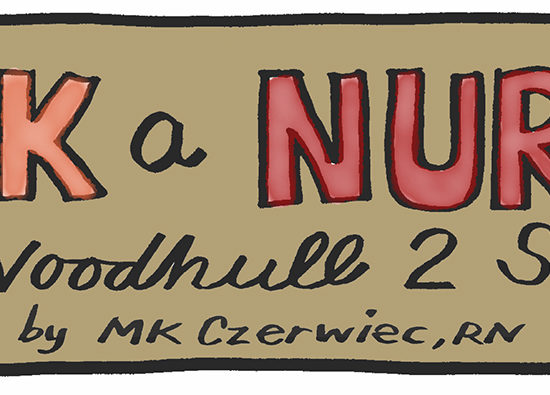
Last week, the World Health Organization released their latest report on the connections between processed meat and cancer. They succeeded in confusing a lot of people — including journalists — who were unclear about what, exactly, the report said.
“Processed meats rank alongside smoking as cancer causes – WHO”
“Bacon, sausage and other processed meats do cause cancer – WHO”
A USA TODAY video that begins,
“say goodbye to your favorite meats, because having that burger could be as much of a health risk as having a smoke…”
doesn’t exactly clarify.
So what’s really true??
A Working Group of 22 international experts from The International Agency for Research on Cancer (IARC), the cancer agency of the World Health Organization, analyzed the accumulated scientific literature. It classified processed meat — like bacon, hot dogs, and, sausage — as carcinogenic to humans (Group 1), based on sufficient evidence in humans that the consumption of processed meat causes colorectal cancer. In other words, there’s enough evidence, from enough studies, to show cause and effect.
What about red meat?
The IARC also classified the consumption of red meat as probably carcinogenic to humans (Group 2A), based on limited evidence that the consumption of red meat causes cancer in humans and strong mechanistic evidence supporting a carcinogenic effect. So there’s not quite enough evidence yet to say without a doubt. And in these analyses, scientists were looking at colorectal cancers – not any other type of disease.
So what’s the problem?
It’s in how these statements were communicated by the WHO — they didn’t discuss what’s known as “risk classification.” That created a lack of appropriate perspective by some media when reporting the story, according to Gary Schwitzer, publisher of the website HealthNewsReview.org. The award-winning site evaluates and grades daily health news reporting by major U.S. news organizations.
“Risk communication is not easy work. But if you’re going to communicate with the public regularly about health care risks, you should either be damned good at it or get out of the business,” he told me in an email. “Many health care and public health entities that should know better nonetheless do a dreadful job of risk communication. “
It’s important for both researchers and journalists to help their audiences put issues in perspective. Schwitzer pointed to this article in The Atlantic which did just that — it properly reported the results and took the IARC to task for failing to communicate properly.
What did this report mean to say?
The bottom line is that both bacon and smoking, along with other well-documented hazards like asbestos, fall into the same group – “known carcinogens.” It’s one of just five tiers that the IARC groups any substance into. Red meat falls into 2A, “probably carcinogenic,” meaning there’s just not enough evidence at the moment to classify it as tier 1.
What these various tiers don’t do, however, is quantify degree of risk.
“Messages like this one from the World Health Organization need to meet people where they live – as the saying goes, said Schwitzer. “Many people simply don’t know what to do with a report like the one from the WHO. Give up all red and processed meat? Immediately and forever, or else I’ll surely die of cancer?” Check out this piece by Schwitzer on reporting relative vs. absolute risk.
The good news, relatively speaking
Bloomberg View reporter Justin Fox attempts to appropriately frame the report with his op-ed, “Quantifying the risk that bacon will kill you.” He gives an easy to understand explanation of the differences between relative and absolute risk and cautions, “Information about relative risk can be misleading, then, unless it’s presented in the context of absolute risk.”
Vox also does a commendable job explaining the relative risk of eating a burger or a couple of strips of bacon once in a while — “Specifically, the researchers found evidence that eating a 50-gram portion of processed meat daily (about one hot dog) can increase a person’s relative risk of colorectal cancer by 18 percent. Since a person’s lifetime risk of colorectal cancer is about five percent, daily meat consumption seems to boost that absolute risk by one percentage point to 6 percent (or 18 percent of the 5 percent lifetime risk).”
A companion article chastises the IARC for its confusing communication and points a finger at sloppy journalism by some media outlets. “The trouble is that the IARC uses a very confusing scale for classifying carcinogens. They tell you if something can cause cancer, but not how big the risk actually is.”
All other things being equal, that’s why bacon eating isn’t as risky as smoking. Smokers are about 25 times more likely to develop lung cancer than non-smokers. One in every three cancer deaths is attributed to smoking, according to the American Cancer Society.
As Vox explained, “The Global Burden of Disease Project attributes about 34,000 cancer deaths each year to diets that are high in processed meat. That sounds like a lot, but it pales beside the 1 million annual cancer deaths attributable to smoking or 600,000 cancer deaths linked to excess alcohol consumption.”
Can you see how these numbers create a lot of unnecessary confusion among consumers — and among journalists?
So much so that the WHO issued a Q&A to clarify the classification processes and explain that different substances within a group have different relative risks. You need to scroll down to question 9 (!) to find it, though.
If journalists are unaware of the IARC’s processes, don’t understand relative vs. absolute risk, or are just going for a clickbait headline, there are bound to be erroneous stories.
What’s your reaction to this headline?
Bacon, Sausage Pose The Same Cancer Risk As Smoking: WHO To Give Warning On Carcinogenic Effects Of Processed Meat
Schwitzer recommended that anyone who communicates about health risks read up on Gerd Gigerenzer’s work at the Max Planck Institute in Berlin and its Harding Center for Risk Literacy. “There are people there working full-time on risk communication issues. And there are many lessons available for anyone to read for free online. WHO communicators, journalists, and the general public should read, learn, and improve their understanding. “
Incidentally, he added, “they gave this issue the prize for “Bad Statistic of the Month” in an article headlined, Wursthysterie. (Available only in German on the website). My own translation of one key line: “Health risks in foodstuffs are turbogenerators of headlines.”








